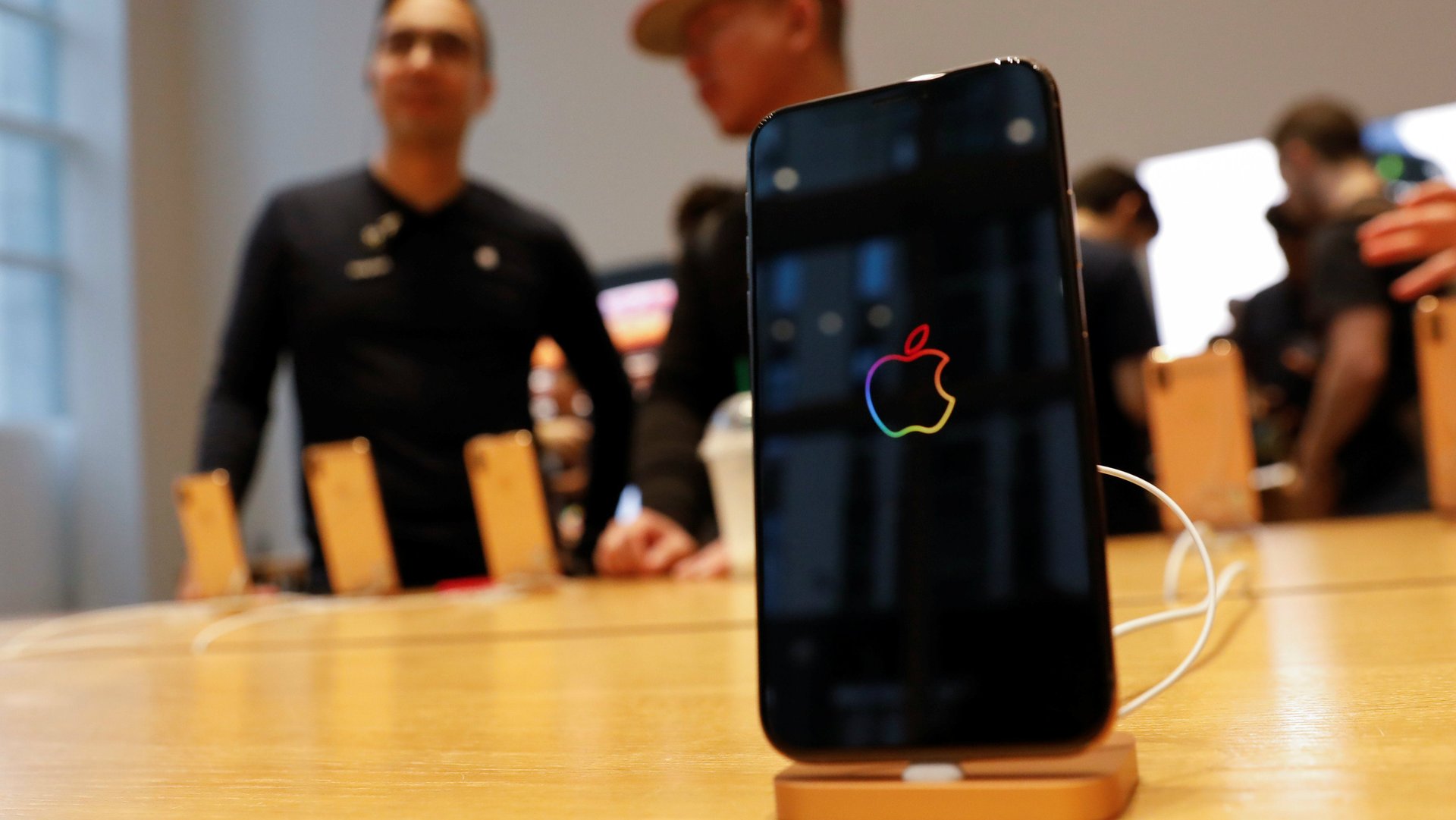The latest pairing between big tech and a big bank is an Apple-Goldman Sachs credit card
Some of America’s biggest tech companies are pairing off with the country’s biggest banks.


Some of America’s biggest tech companies are pairing off with the country’s biggest banks.
The latest marriage is between Apple and Goldman Sachs, which are teaming up on a credit card linked to Apple’s digital wallet, according to the Wall Street Journal (paywall). The joint offering could launch later this year, and would provide extra financial features via Apple Pay, such as managing balances and setting spending goals. Last year, the newspaper reported (paywall) that Amazon and JPMorgan are in discussions to start a checking account service.
Both Apple and Goldman have something to gain from the partnership. As iPhones sales flag, Apple is looking to boost its recurring services revenue to $50 billion by 2020, and teaming up with Goldman gives the tech giant a way to branch into financial services without the regulatory scrutiny of becoming a bank. Its Apple Pay service, slow to catch on the US, will soon face even more competition from contactless cards.
Goldman, meanwhile, has been expanding in consumer banking and needs to reach more consumers—the hundreds of millions of people who use Apple devices could certainly help them do that. Goldman’s trading-dependent business model was upended by post-crisis regulations, and its stock price has wilted under recent legal troubles. The New York bank jumped into consumer banking in 2016 and has been rapidly ramping up savings deposits and a personal loan portfolio. The consumer division is fully digital and doesn’t have physical bank branches, but lacked an app for reaching consumers until it bought Clarity Money last year.
While many of the largest US banks have long-standing ties to Visa and the credit card industry, Goldman is fresh to the game and relatively unencumbered by existing relationships. The Apple Pay card will reportedly use Mastercard’s payment network, which is the second largest in the US after Visa. The card will offer cash back of about 2% on most purchases, and perhaps more on Apple services and devices, the Journal said. But instead of competing directly in the rewards game, Apple and Goldman may look to get ahead by tightly integrating the card into the iPhone.
A risk for financial companies is that Apple Pay becomes widely used and finds a way to skip over the card networks entirely. That’s the model that’s developed in China, where the AliPay and Wechat mobile wallets tower over the card network. Goldman has less to lose than the big consumer banks if a system like this develops.
The companies will be walking a careful line. Execs from Goldman’s Marcus division have touted its personal loans as being more financially prudent than typical credit cards, which can become a drain on consumers’ pocketbooks. Research suggests that whizzy mobile payment apps, meanwhile, can result in consumers making even worse decisions with their money. The Journal reported that engineers are looking at features that would encourage better financial habits, like notifications to help restrain spending.
One of the biggest opportunities could also be the hardest to pull off. The personal data generated by combining banking and technology services would let the companies offer highly personalized advice, like suggestions for investing, insurance, or even things like refinancing a mortgage. This self-driving money concept is a holy grail for fintech startups as well as broader financial industry. But it risks creeping out customers if it’s seen as overly intrusive.
Personal data is a lucrative but dangerous commodity these days. Apple CEO Tim Cook has railed against the data industrial complex, gaining kudos as other tech giants came under attack for misusing customers’ personal information. Goldman’s public image, rightly or wrongly, took a big hit after the financial crisis, which doesn’t help as it pushes into consumer finance. The stakes are high for data missteps these days, and neither company will want to put a foot wrong as they walk down the aisle together.